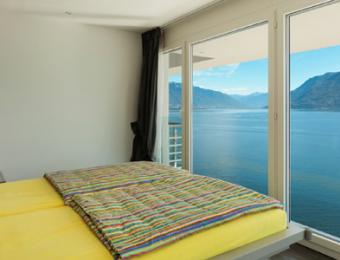Ordinary windows can represent a major source of unwanted heat gain in summer and significant heat loss in winter. Up to 40% of a home’s heating energy is lost and up to 87% of its heat is gained through windows. Installing energy efficient windows will improve the thermal performance and comfort of your home alongside reducing energy costs and Australia’s greenhouse gas emissions.
So how do you compare the energy efficiency of different windows? The simplest way to do this is using the Window Energy Rating Scheme (WERS). WERS rates the energy impact of residential and commercial windows throughout Australia. Useful performance figures such as U-value and SHGC as well as air infiltration, condensation, fading and visible transmittance are provided.
- Energy efficiency means reducing the amount of times heating and cooling appliances are turned on and off.
How does the rating system work?
WERS-rated windows, skylights, glazed doors and window films are accompanied by a sticker and certificate certifying it has been tested by an independent accredited simulator and approved by a WERS auditor. Thousands of windows and window films from the majority of manufacturers are listed according to the frame and glazing or tinting type.
The sticker and certificate display the familiar star rating diagram, as shown below, indicating heating and cooling performance. Cooling and heating stars are rated on a scale of 0 to 10 stars with more stars indicating better performance. These ratings show the effect the window will have on the energy performance of the whole house.

Detailed energy performance information on a comprehensive range of certified windows is also available through the WERS website. In addition to the cooling and heating stars, the online product directory provides an indicative percentage reduction in heating and cooling needs as well as values for thermal, solar, optical and air infiltration performance.
Specific information about WERS ratings for window films is available on the WERS For Film page of the WERS site.
Understanding online WERS information

| 1. | Window ID is a unique code given to each window in the database |
| 2. | Glazing specifies that type of glass used in the window system. When on the WERS site, hovering your mouse over the figure will explain the abbreviations used. Where three figures are given this signifies a double glazed window. For example, 3/6/3 as shown in the WERS table above, indicates the outside pane is 3mm thick, the air gap is 6mm wide and the inside pane is 3mm thick. |
| 3. | Cooling and heating stars show how energy efficient the window is in terms of cooling and heating. Rating stars are on a scale of 1 to 10 with more stars indicating better performance. |
| 4. | % Improvement figures are compared with a base window using 3mm clear glass in a standard aluminium frame. A negative percentage improvement figure indicates performance worse than the base window. A positive percentage improvement figure indicates performance better than the base window. |
| 5. | U-value measures how well a product prevents heat from escaping the home in winter and entering it in summer. The lower the U-Value (Uw), the better the thermal efficiency. |
| 6. | Solar Heat Gain Coefficient (SHGC) measures how well a product blocks heat from the sun rays. SHGC is expressed as a number between 0 and 1. The lower the SHGC, the better a product is at blocking unwanted heat gain. |
| 7. | Visible Transmittance (Tvw) measures how much light comes through a window. Tvw is expressed as a number between 0 and 1. The higher the number the more daylight will enter the room |
| 8. | Air Infiltration (AI) measures how much outside air leaks into the home through the window. The lower the AI the better. An AI of 0 is only possible with fixed windows. |





